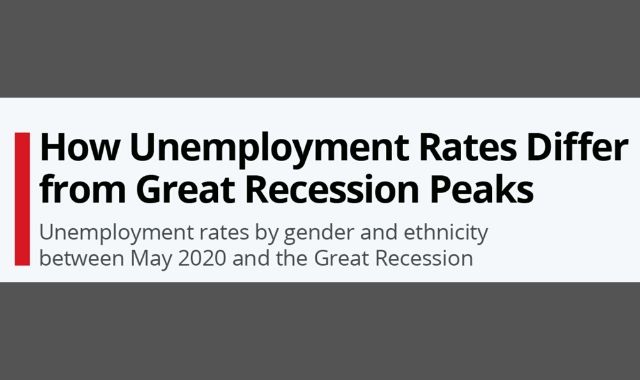If we think of it, technology is the reason why many people haven't lost their jobs during these stressful times of COVID-19. Back in 2009 and 2010 during the Great Recession, technology had not evolved to the extent it has today, and thus unemployment was at a much larger scale. During the period of the Great Recession between 2009 and 2010, employers and employees both did not have the opportunity to benefit from remote working technologies.
So would it be fair to compare COVID-19 with the Great Recession of 2009 and 2010? Let's find out. Both the crises had uncertainty, collapse and major economic reactions. By May 2020, around 20.5 million Americans were unemployed. The U.S. unemployment rate was at 3.8% in February 2020 but after the rise of the global pandemic, it increased to 13% in May. On the other hand, the unemployment rate peaked up to 10.6% in January 2010 during the Great Recession, the time period of which was officially from December 2007 to June 2009.
COVID-19 has resulted in more unemployment just in a short time period of three months, as compared to two years of the Great Recession. Another important point is that due to challenges in measuring accurate unemployment numbers amidst coronavirus restrictions, the unemployment rate by May 2020 may have been even more than 13%, a possible maximum of 16%.
Also See: Not All Doom & Gloom: Coronavirus Business Success Stories #infographic
Furthermore, the unemployment rate of men was greater than women at the time of the Great Recession Peak. During COVID-19, the workers amongst which the unemployment rate is extremely high, are women. In May 2020, the unemployment rate for women was 14.3%, whereas that of men was 11.9%. A major reason for women having a higher figure is that majority of them were employed in the two sectors of leisure and hospitality, and educational services. The employment rate of these two sectors has fallen all the way from 39% to 15%, recorded during the period of February to May.
Additionally, black men have faced less unemployment in May 2020, as compared to the Great Recession. The reasons for this are not completely clear, but again, they have to do with the sectors these men are associated with. A few other statistics include immigrants whose unemployment rates have been far more than those of White Americans. Have a look at the statistics below for a brief summary of the unemployment rate difference between the two major peaks.
Infographic by: Statista


